
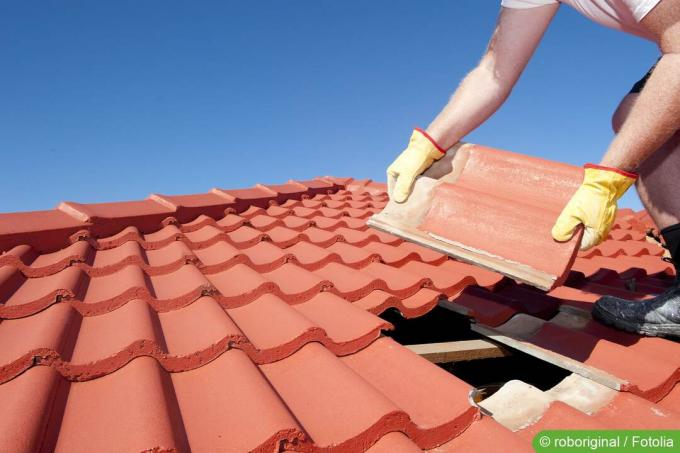
Table of contents
- Roof problem with blowing snow
- Close air ducts
- mortar
- geomembranes
- Problem solving with underlay film
- Measurement instructions
- Instructions for execution
Snow drifts often get under the roof tiles when blizzards or strong winds blow them underneath. The moisture often causes damage from meltwater. Air spaces between the roof tiles are to blame. Homeowners should now find out how to counteract this.
Snow blowing under the roof tiles can become a serious problem and result in consequential damage with expensive repair costs. The following tips can be used to prevent drifting snow from penetrating under the roof.
Roof problem with blowing snow
If you have a cold roof through which drift snow is blown in, you don't have to worry. As a rule, the wind fends it off again or it escapes as water vapor.
In the case of flat and warm roofs, snow that has penetrated through pantiles often causes serious damage to the roof construction and/or internal roof elements. In the worst case, it can lead to a collapse hazard. The greatest dangers for blowing snow under the roof tiles include the following:
- Moisture penetration of wooden rafters/roof supports: mold formation and material decomposition
- Moisture in insulation materials: loss of function and mold growth
- Melt water creeps into electrical ducts: water leaks from sockets and light switches and there is a risk of short circuits
- Gets behind wall cladding on floors below: Softening of plasterboard walls in particular
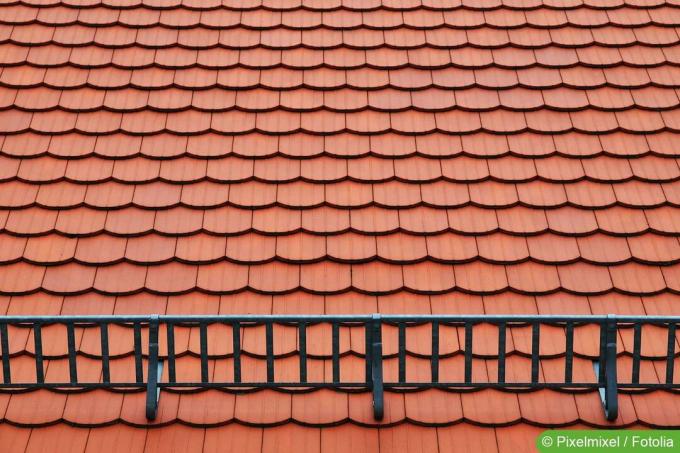
Tip:
Damage caused by blowing snow can be expensive. Here, the building insurance should be based on an additional elementary insurance protection Damage coverage for natural hazards must be taken into account, because pure building insurance covers these often not up.
Close air ducts
The cause of penetration into houses through the roof is due to the often present "air ducts" of the bricks. These are located on the areas where the individual brick strips overlap. The easiest way to keep blowing snow out in the future is to close these air zones.
mortar
Some home craftsmen use plain mortar to seal the air passages between the bricks. This is used to close the lower brick joints. The disadvantage is that, as a rule, the roof always “works” easily, and the mortar quickly breaks. On average, ten to 20 percent of the mortar mass has to be renewed every two to three years at the latest.
geomembranes
Alternatively, sheet metal and rubber strips can also be attached to the roof tiles as so-called snow shields. They are available in different thicknesses/strengths and are installed in the roof joints. Depending on their width, they can be laid well below the tiles above them so that the snow is “slowed down” as it flies in and melts back down over the roof.
Problem solving with underlay film
The most effective and long-term solution against blowing snow is an underlay film. The underlay foil is used to divert water/snow entering the eaves area. It protects the wooden roof construction, the insulation and prevents the uncontrollable flow of meltwater into the house. At the same time, it allows the transport of moist air from the inside of the roof truss and the insulation to the outside - provided it is a diffusion-open underlay film, the use of which is strongly recommended is.

If you are building a new roof, you should always plan for a diffusion-open underlay film when building the roof, because subsequent attachment is possible, but expensive and time-consuming.
Measurement instructions
The underlay foil is attached parallel to the eaves up to the eaves flashing in the lowest roof area. This is where the transition to the water outlet of the roof is located, where there is usually also a direct transition to the gutter.
In the case of a ventilated roof construction, the underlay foil ends approximately seven centimeters below the apex of the ridge. If there is an unventilated roof construction, the underlay film must protrude over the ridge.
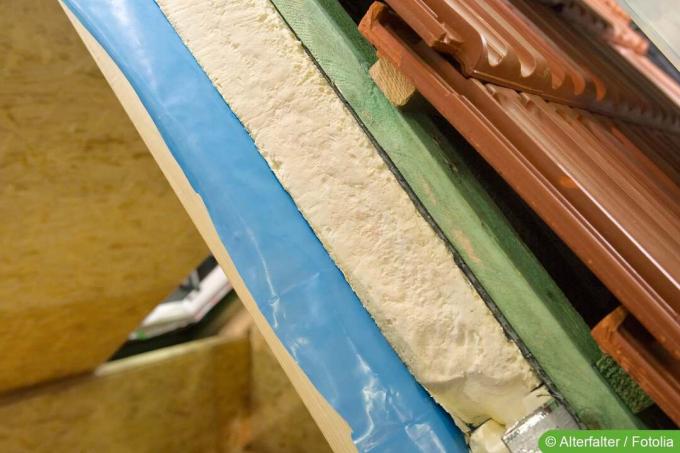
An additional ten centimeters must be added to the measurement results. You will need these later for fastening to the rafters. The foil is then cut to size.
Tip:
When attaching the underlay foil later, make sure that the correct side is facing outwards. This is usually noted on the slides, otherwise the dealer from whom the material was purchased should be asked.
Instructions for execution
Proceed as follows:
- cover roof
- Attach counter battens to the rafters (keep a minimum distance of three centimeters from the (subsequent) insulation)
- put on the underlay foil; Allow for generous web overlaps
- Nail the foil to the counter battens and seal the membrane overlaps with sealing adhesive or special adhesive tape
- cut window areas; Leave the foil longer at the top in order to be able to form a "channel" for the water to drain onto the foil below
- Provide connection to windows with sealing adhesive
- Same procedure for recesses/attachment around chimney
- Attach foil tightly
- Finally put the roof tiles back on
A NOTICE:
It is strongly recommended to cover the roof in order to attach the underlay foil to the upper part of the rafters. Without a roof covering, it would have to be mounted underneath and the rafters and counter battens would not be protected from snow blowing in.
 Home editorial office
Home editorial office
Learn more about roof / attic
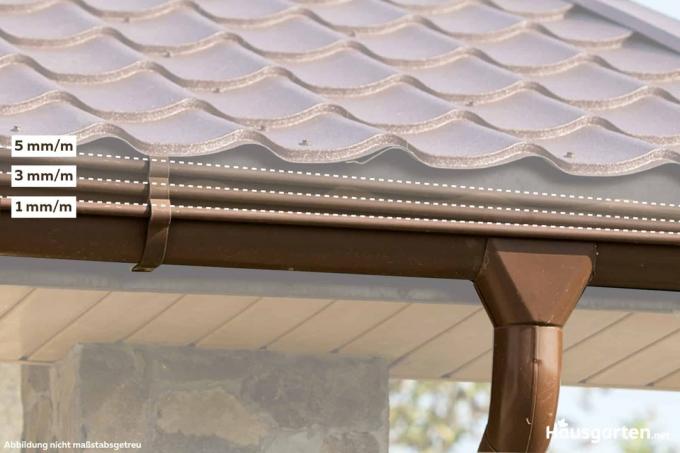
Gutter slope: the ideal slope
For a gutter to function properly, a slope that has an ideal inclination is required. Various factors have to be taken into account. Before installation, you should find out how the gradient is to be calculated and implemented.
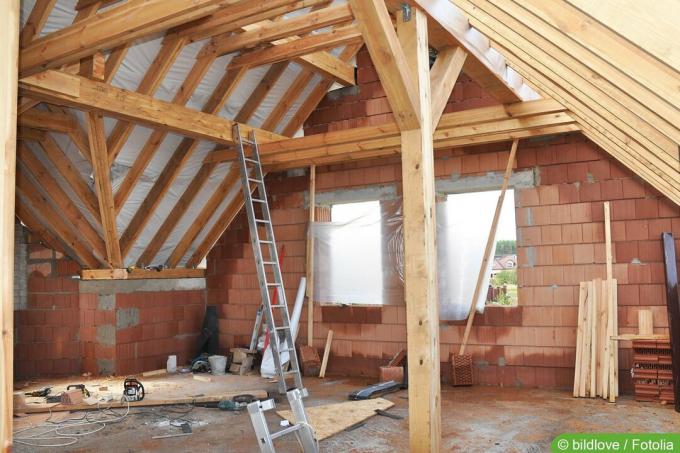
Which attic insulation can be walked on immediately?
Attic insulation effectively reduces heat loss from the building. If the attic is to continue to be used as storage space, the insulation should be accessible as soon as possible. A number of materials can be used for this. They each have advantages and disadvantages as well as different costs.
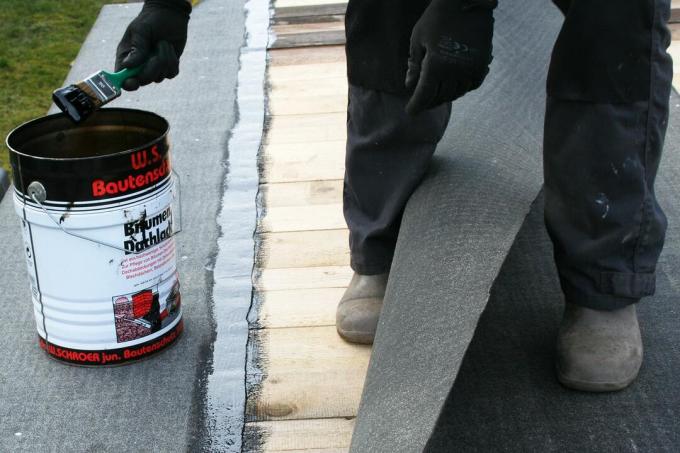
Bitumen stains: 6 removal tips
If you have to process bitumen, you should be careful. The black, viscous mass is sticky and adheres well to clothing, hands and all possible surfaces with which it comes into contact. With our tips you can successfully remove it.
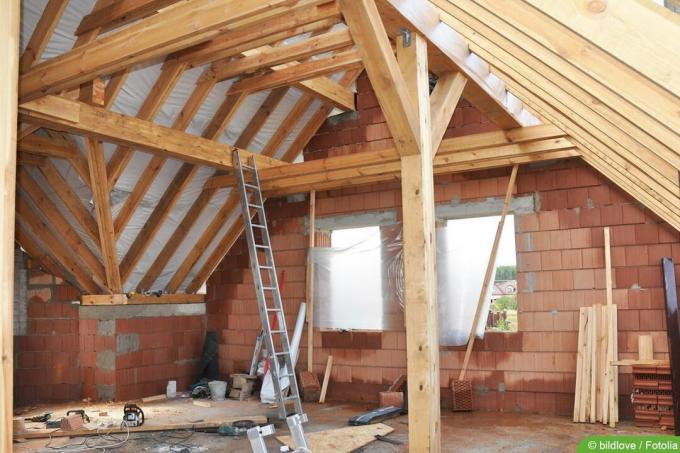
Attic: OSB or Rauspund as roof boarding?
Both OSB and Rauspund boards are suitable as roof boarding. But what are the differences and what is better suited for the attic? Our guide answers these and other questions about the two materials.

Laying a vapor barrier: how far does the vapor barrier have to go?
Laying a vapor barrier is essential in some cases. But how far does the vapor barrier have to be installed, what is it and what are the differences? These and more questions are answered in the following guide.

Decision-making aid: 11 garden shed roof coverings
When it comes to the roof covering for the garden house, there are differences in terms of material, costs and effort. Our guide shows what you should pay attention to and where the respective advantages and disadvantages lie. This gives you a decision-making aid for the garden house roof.



